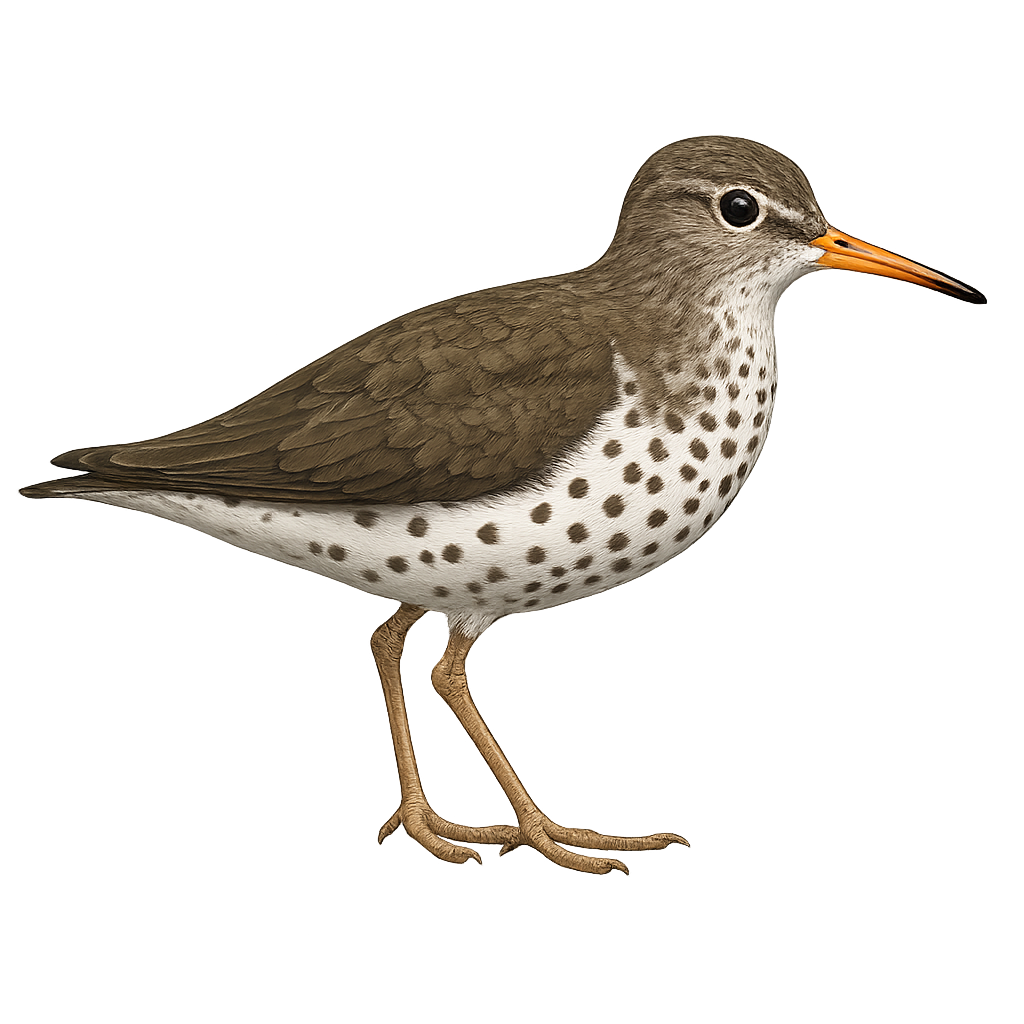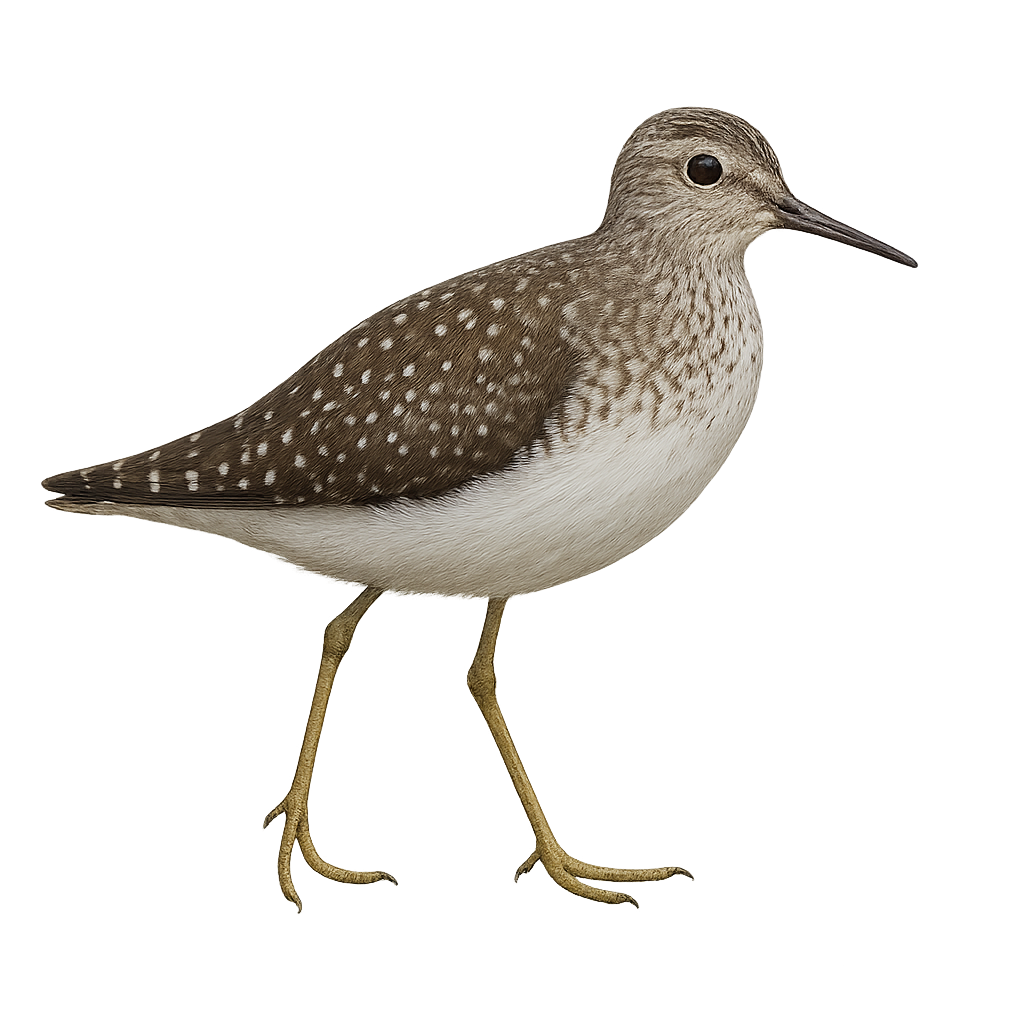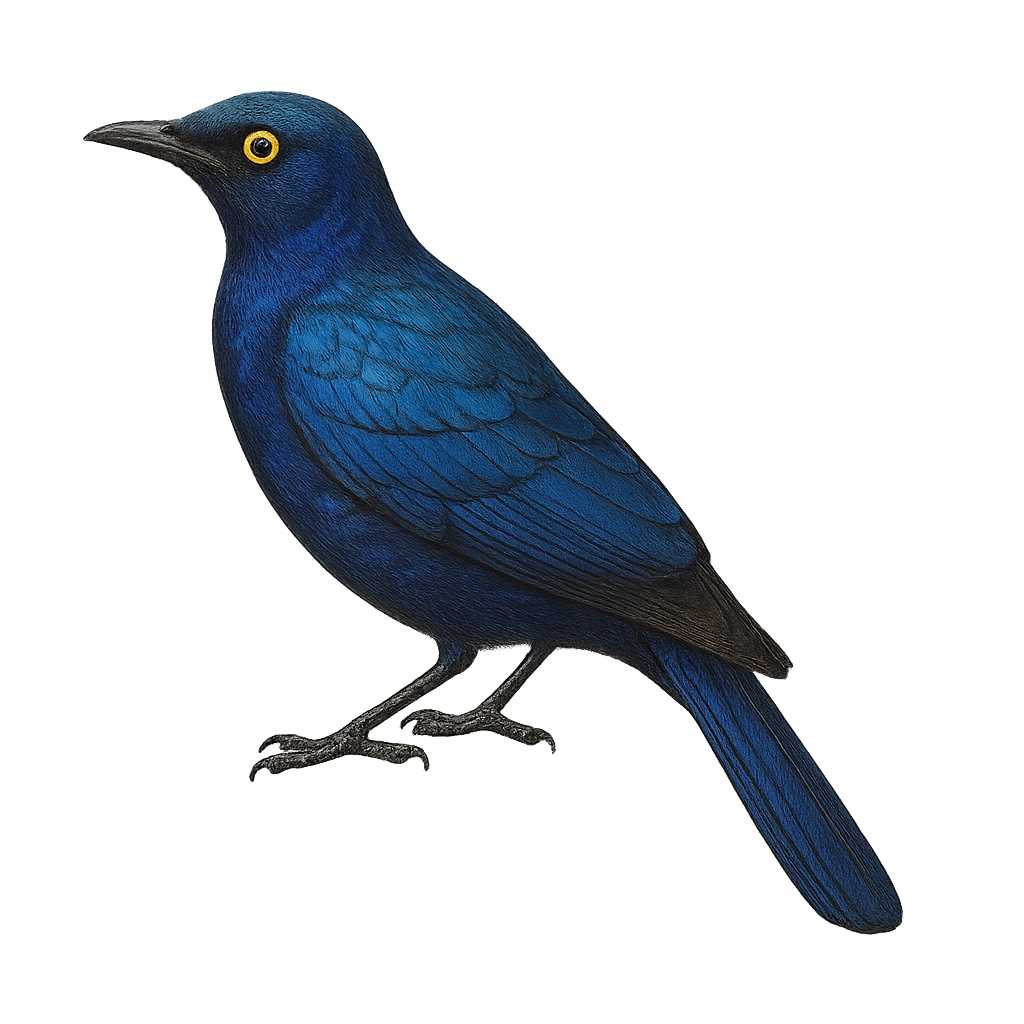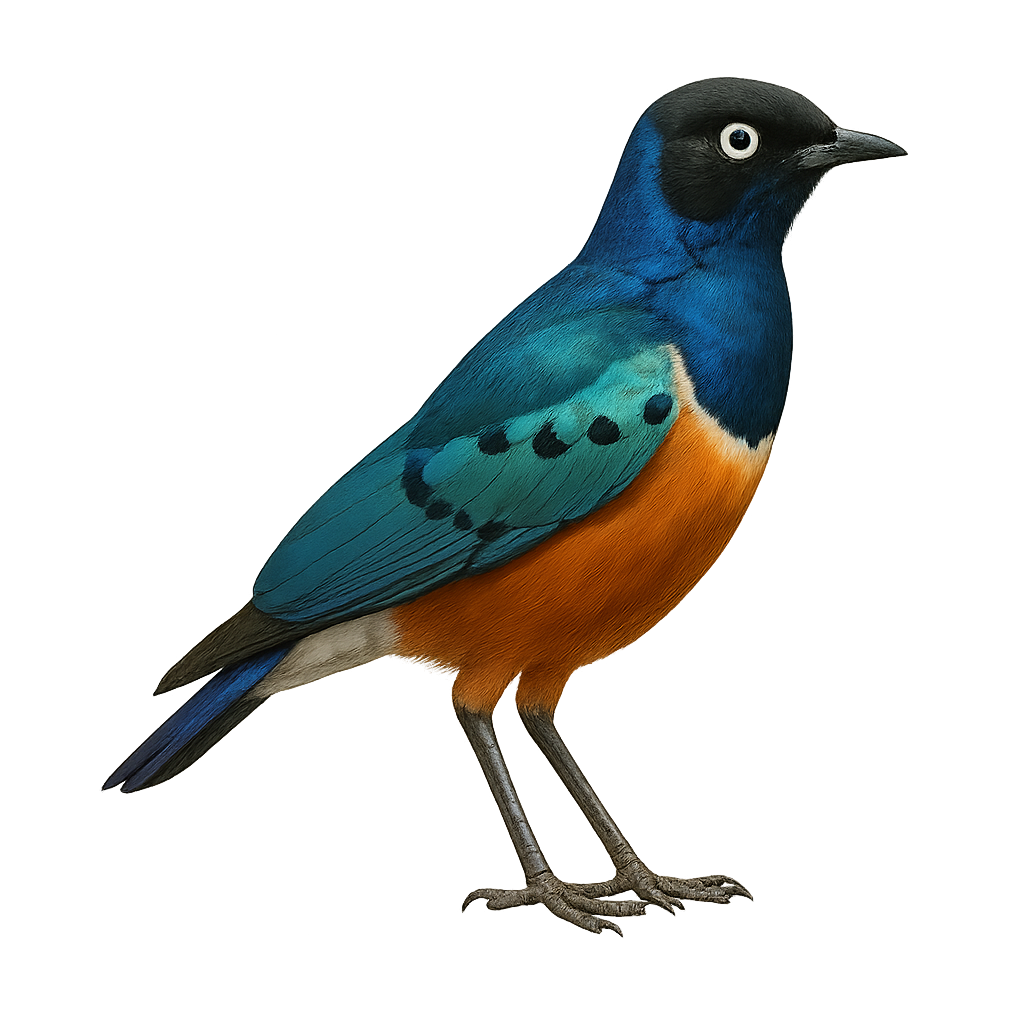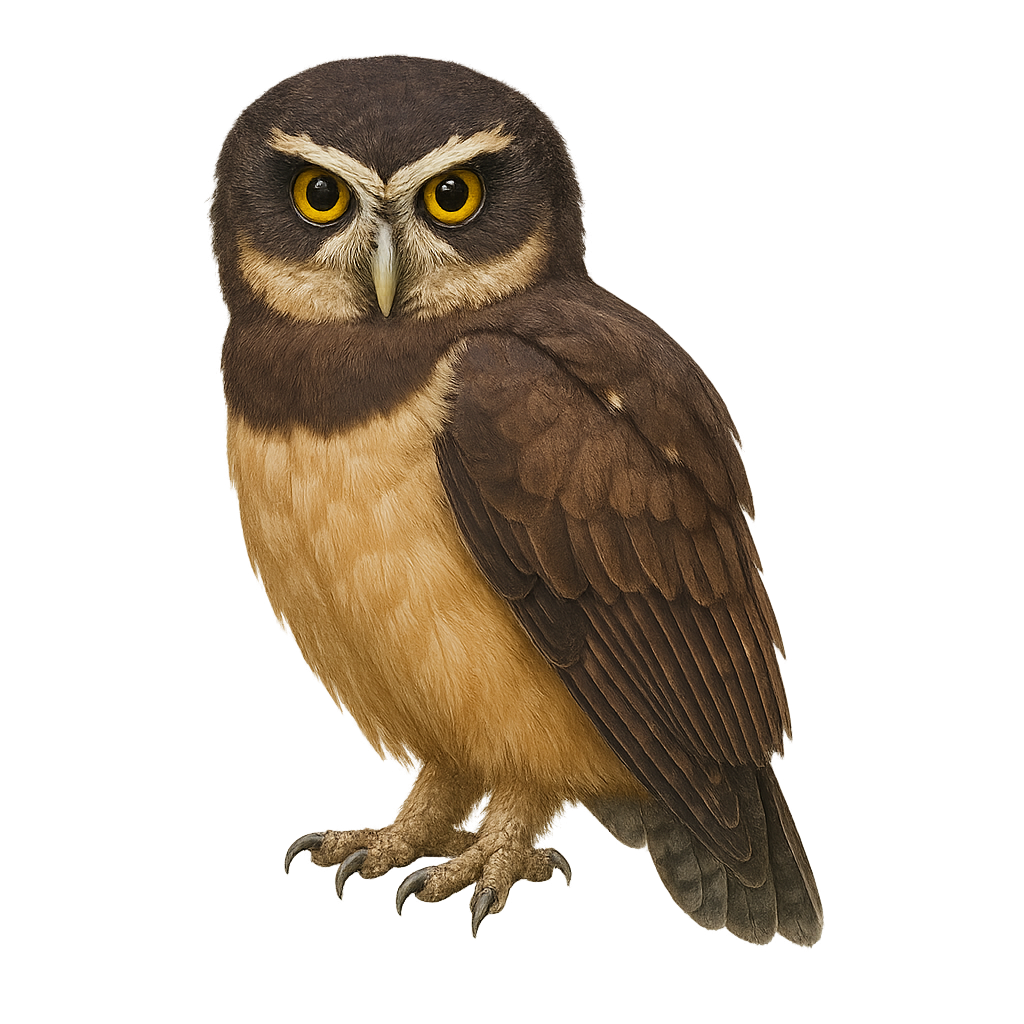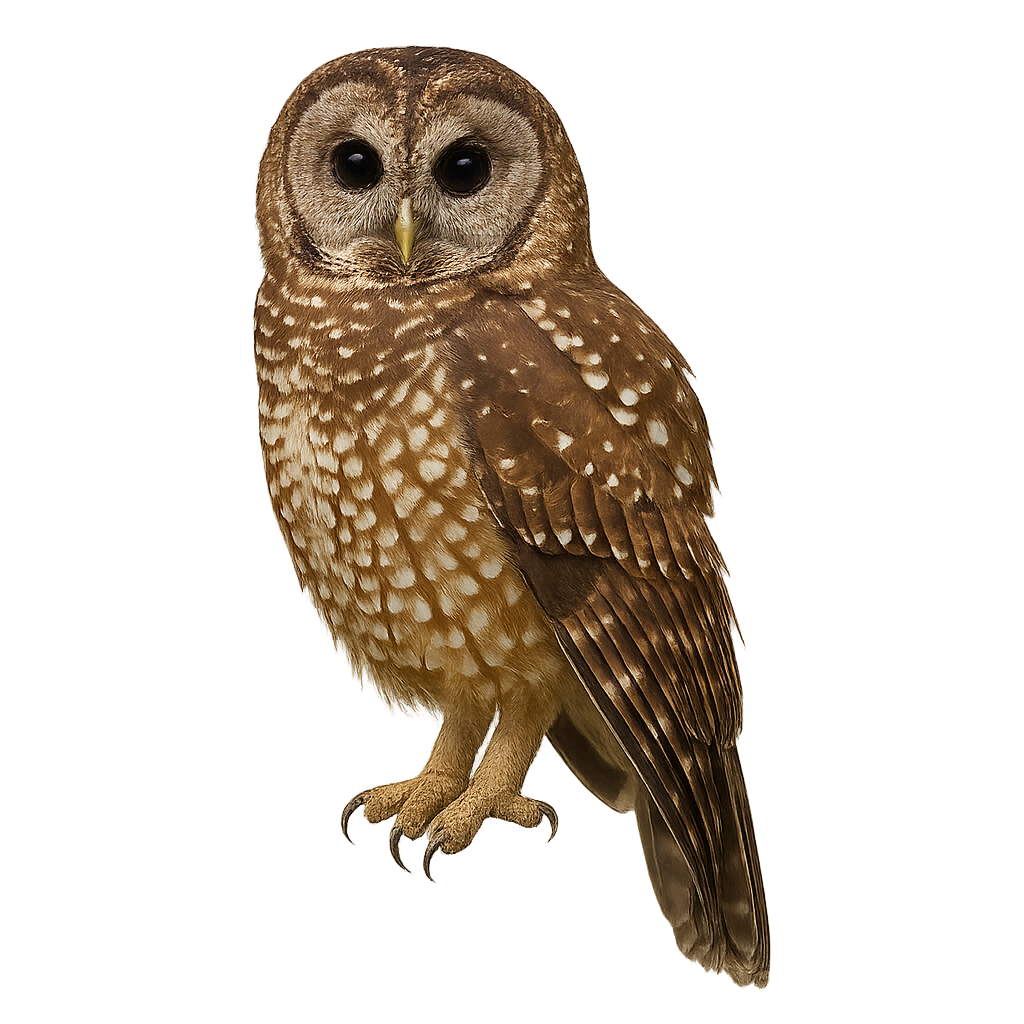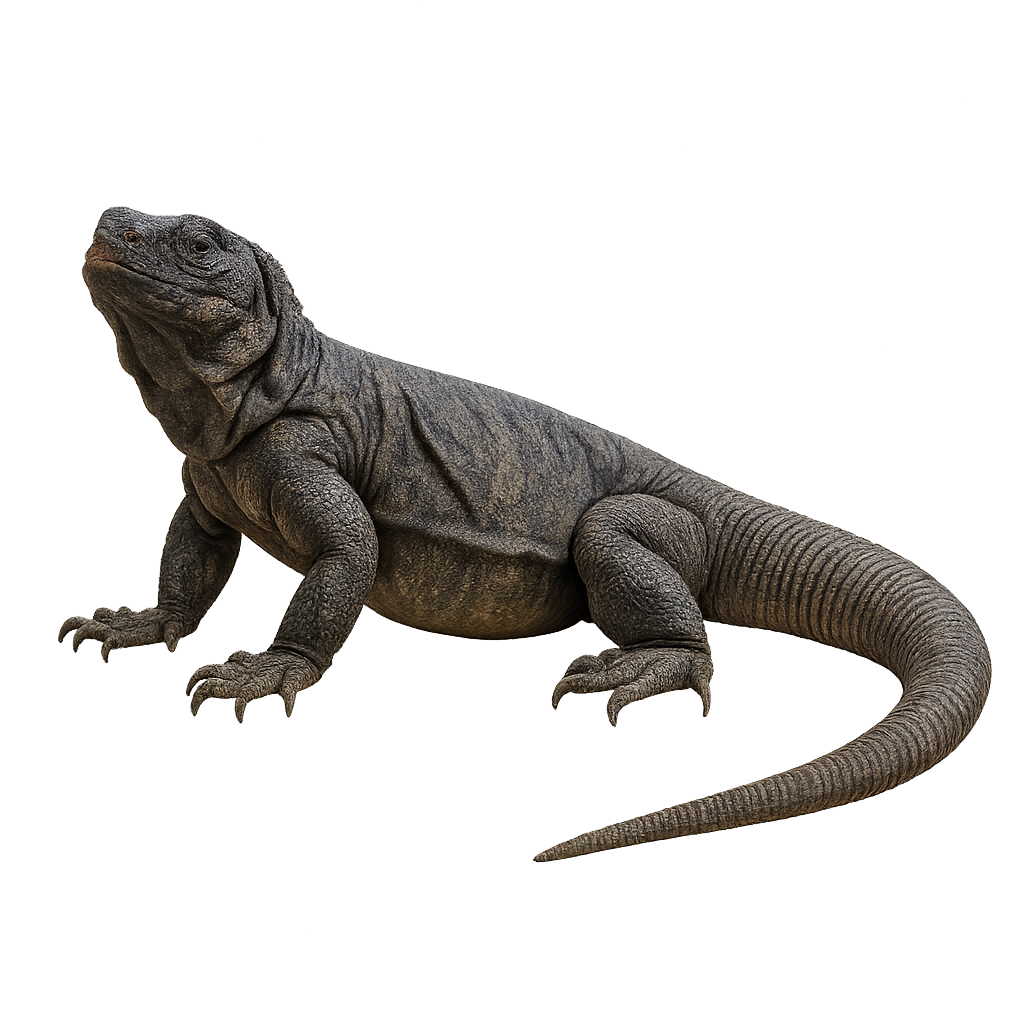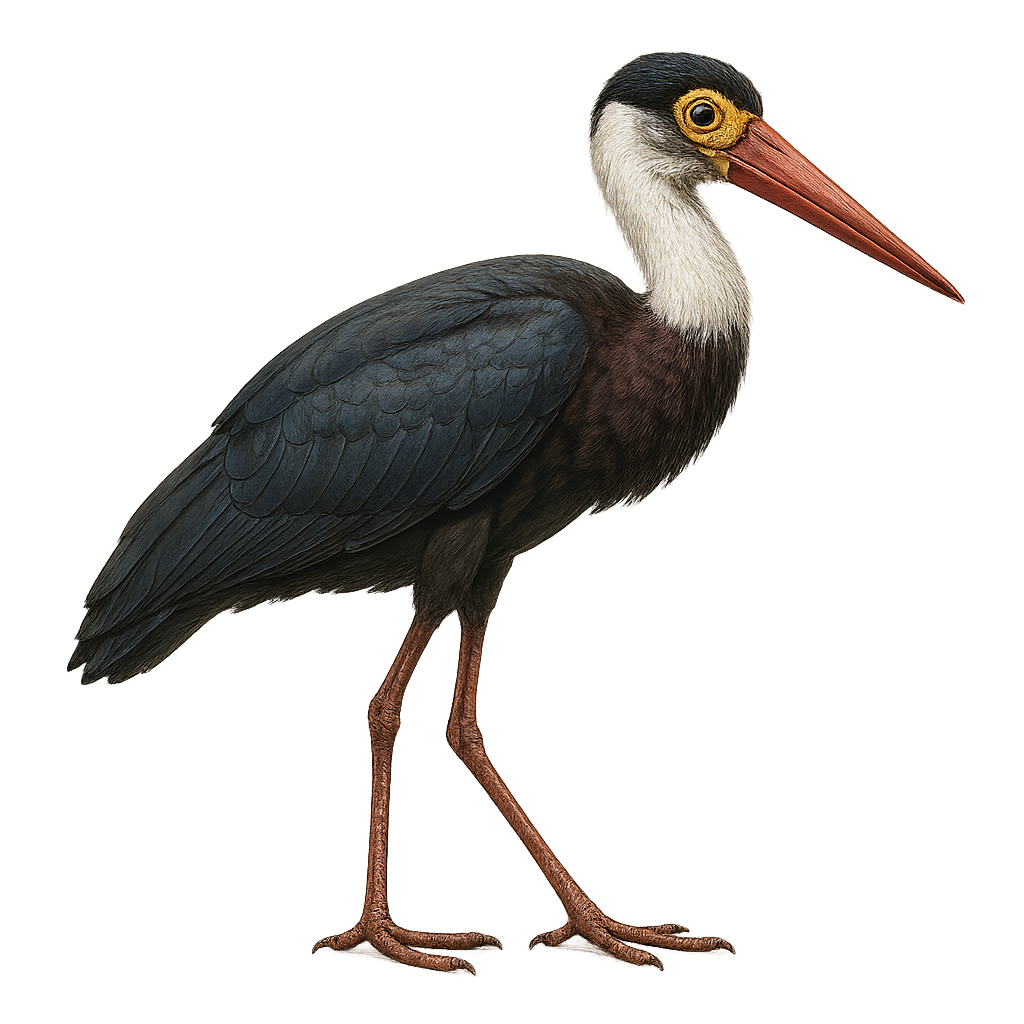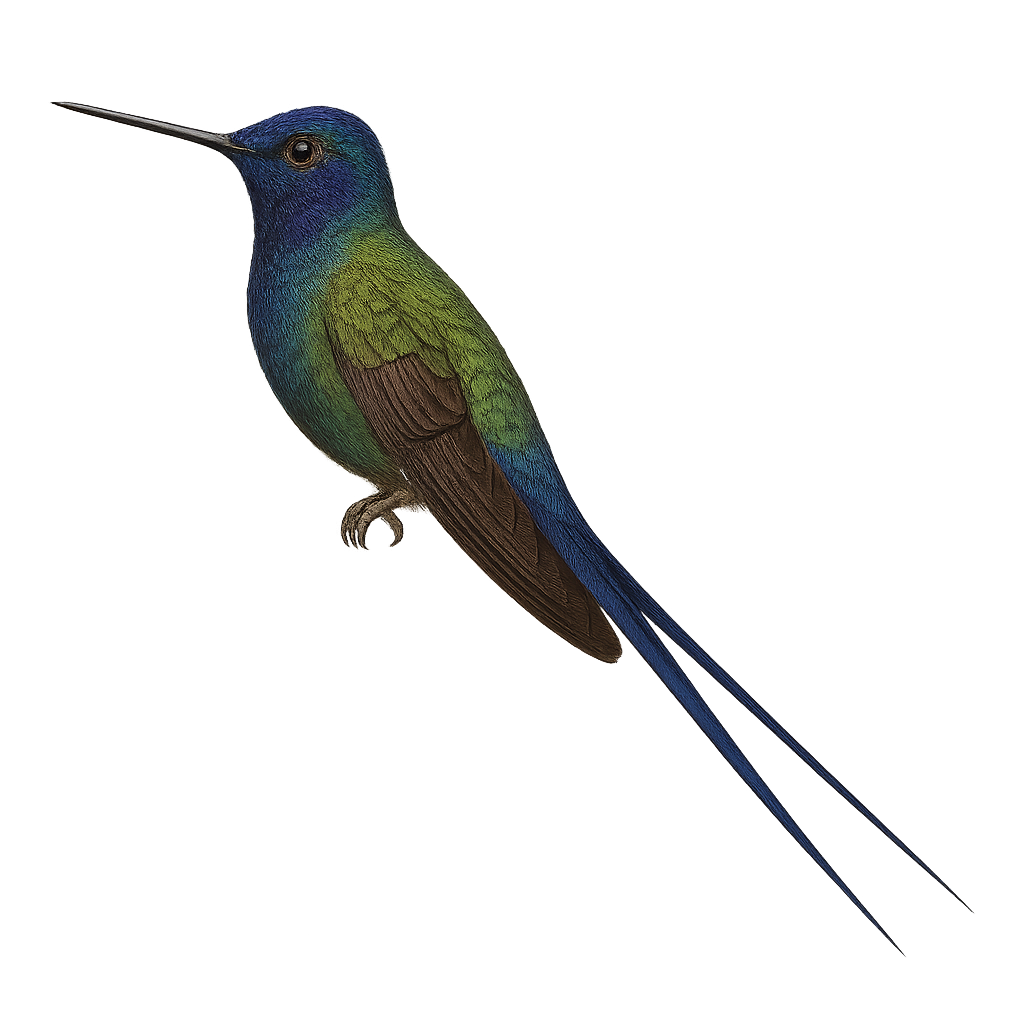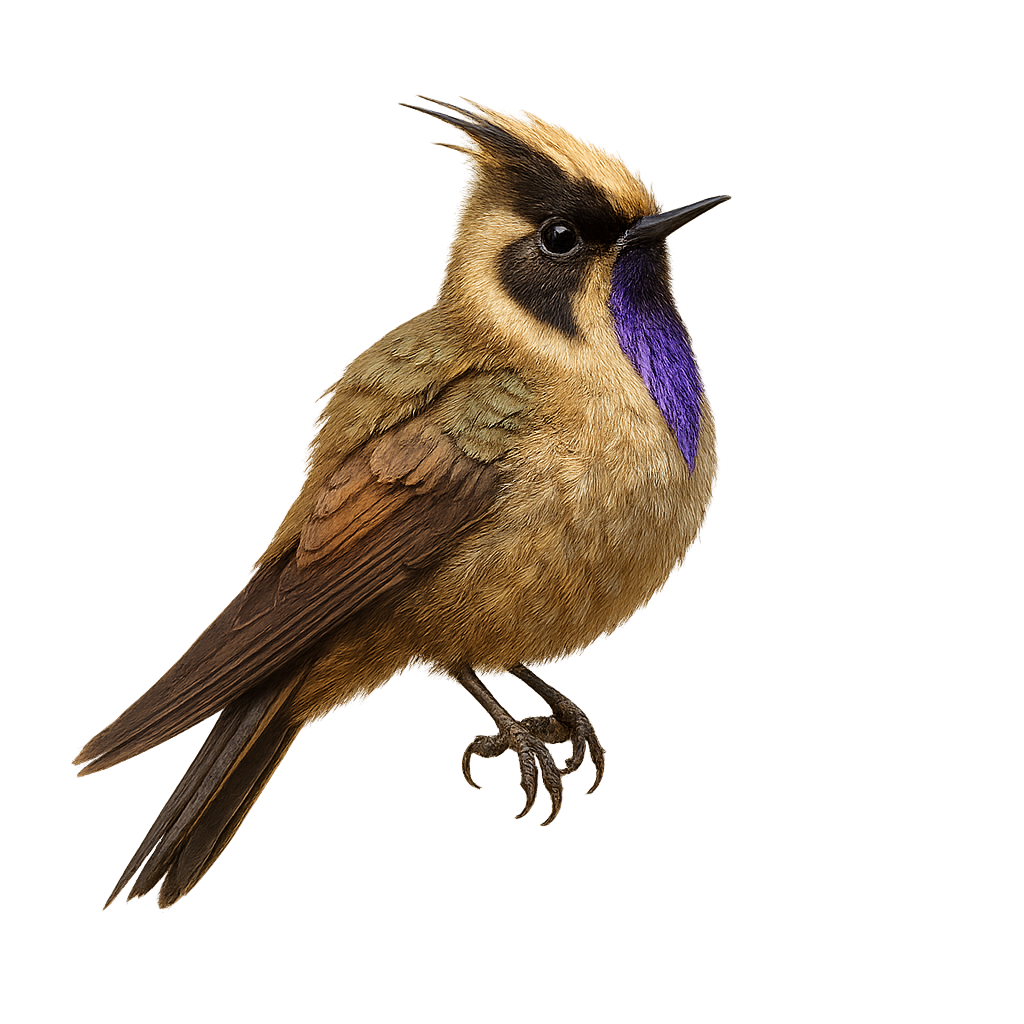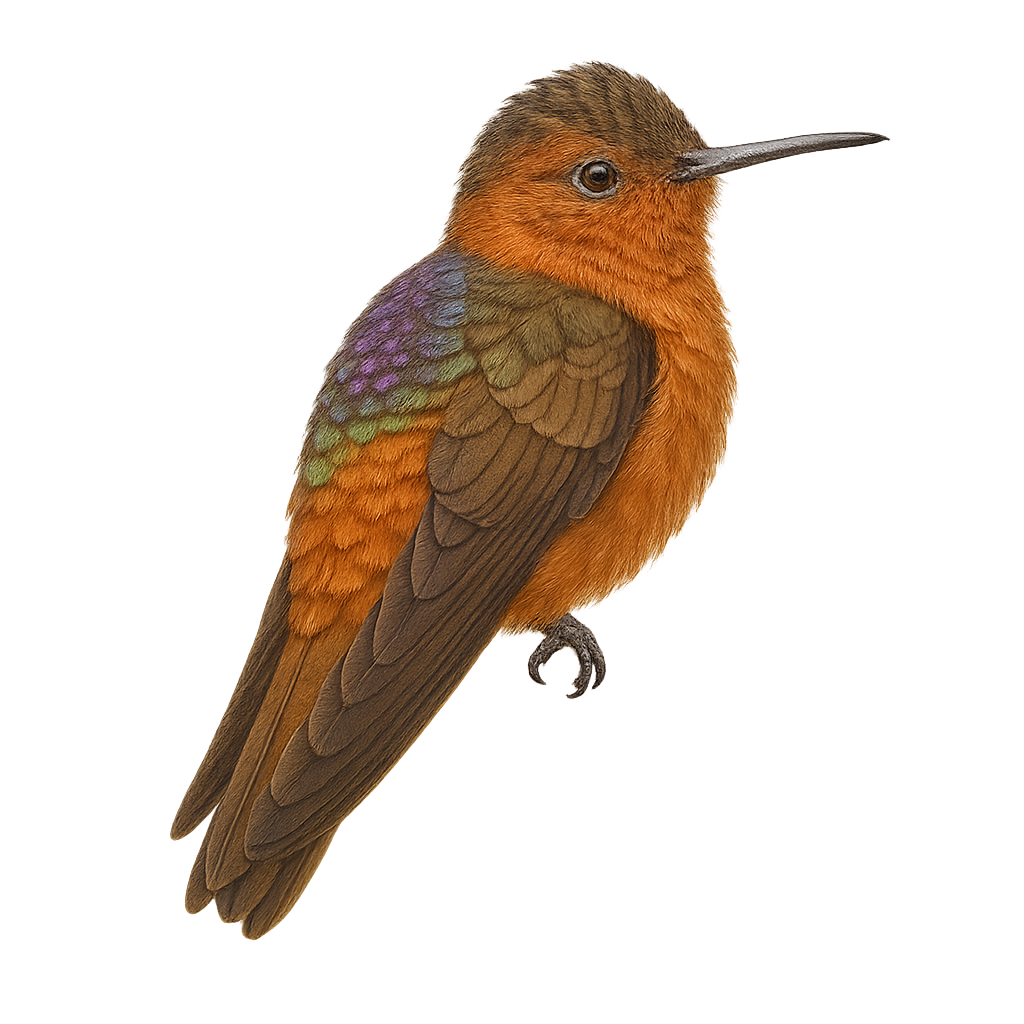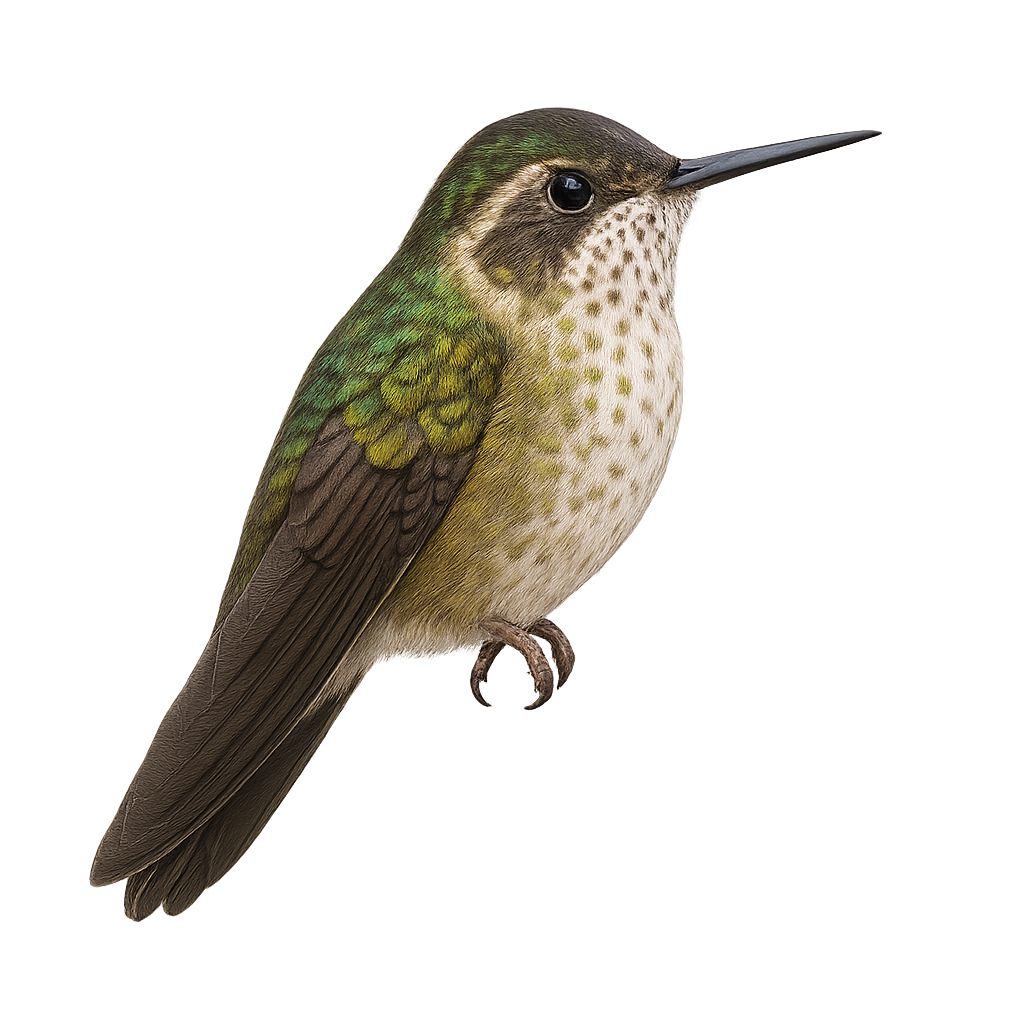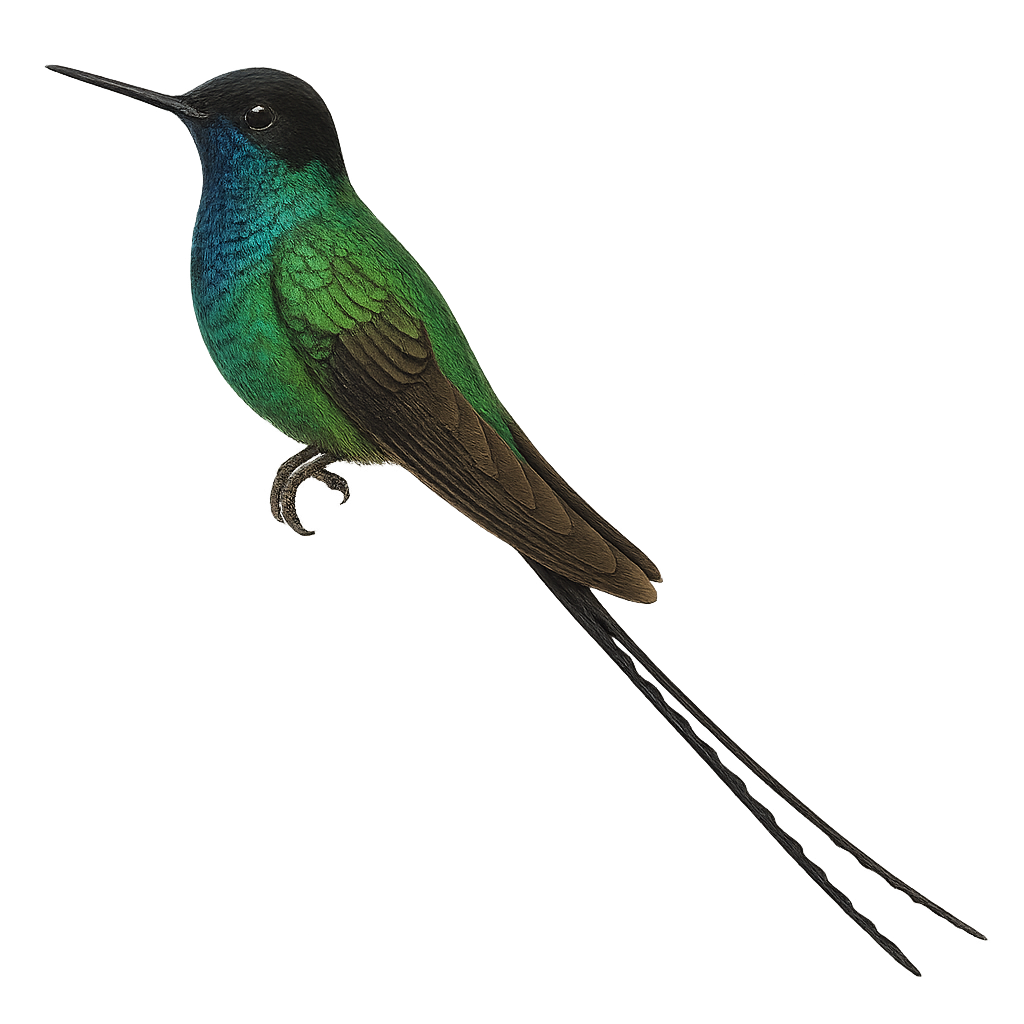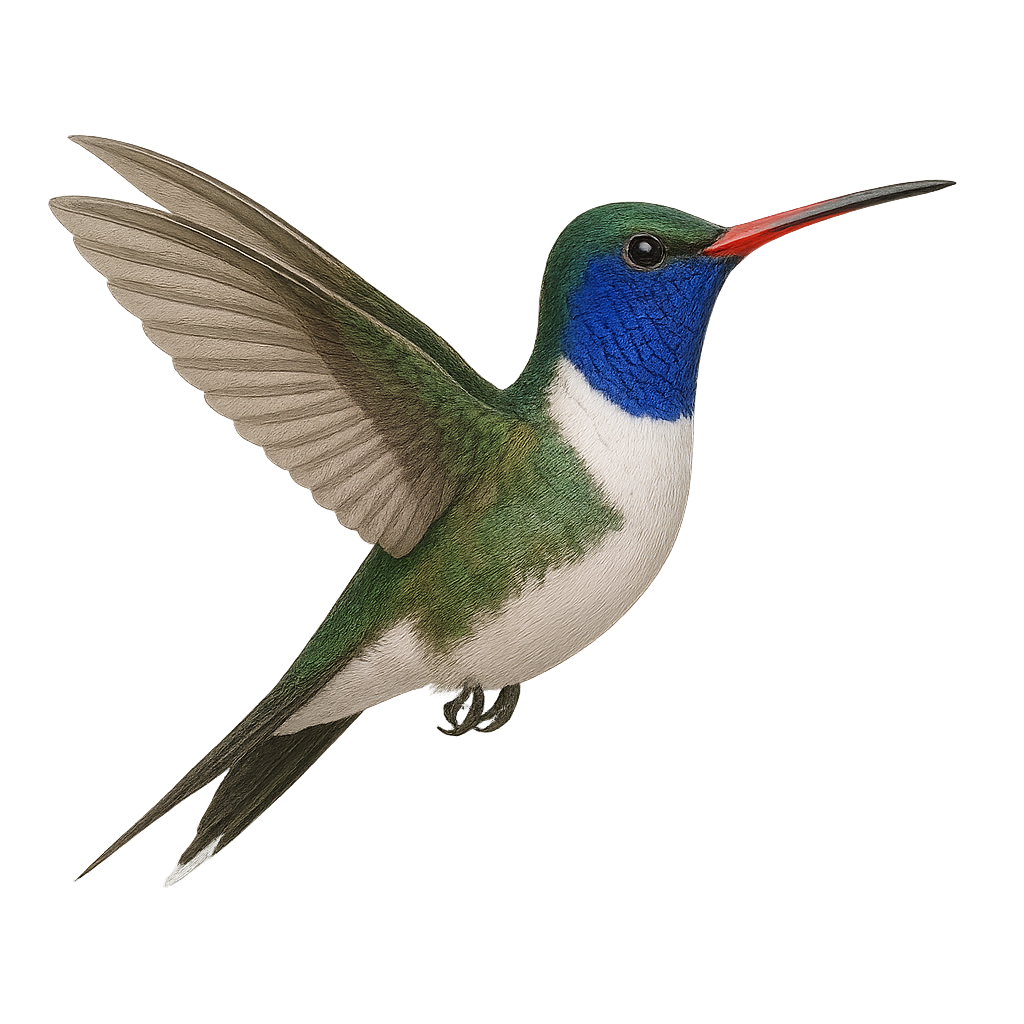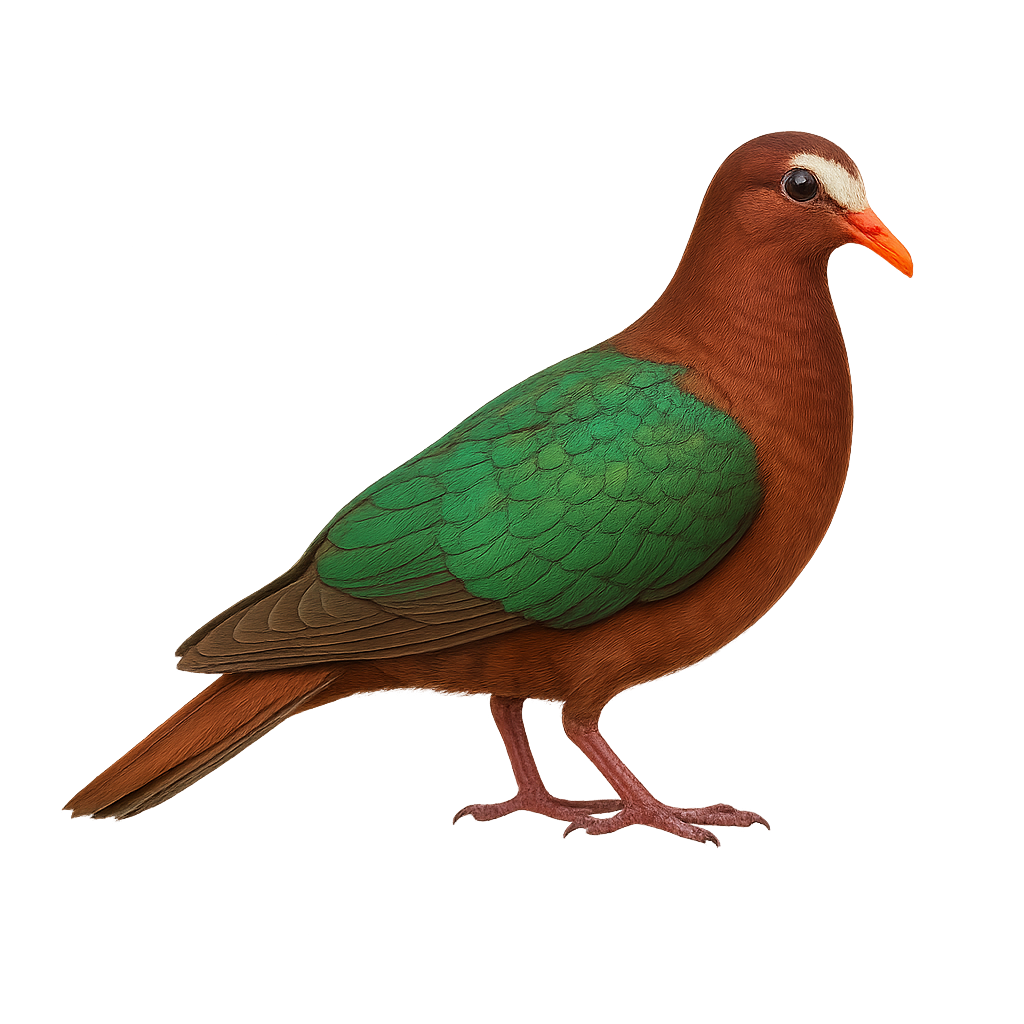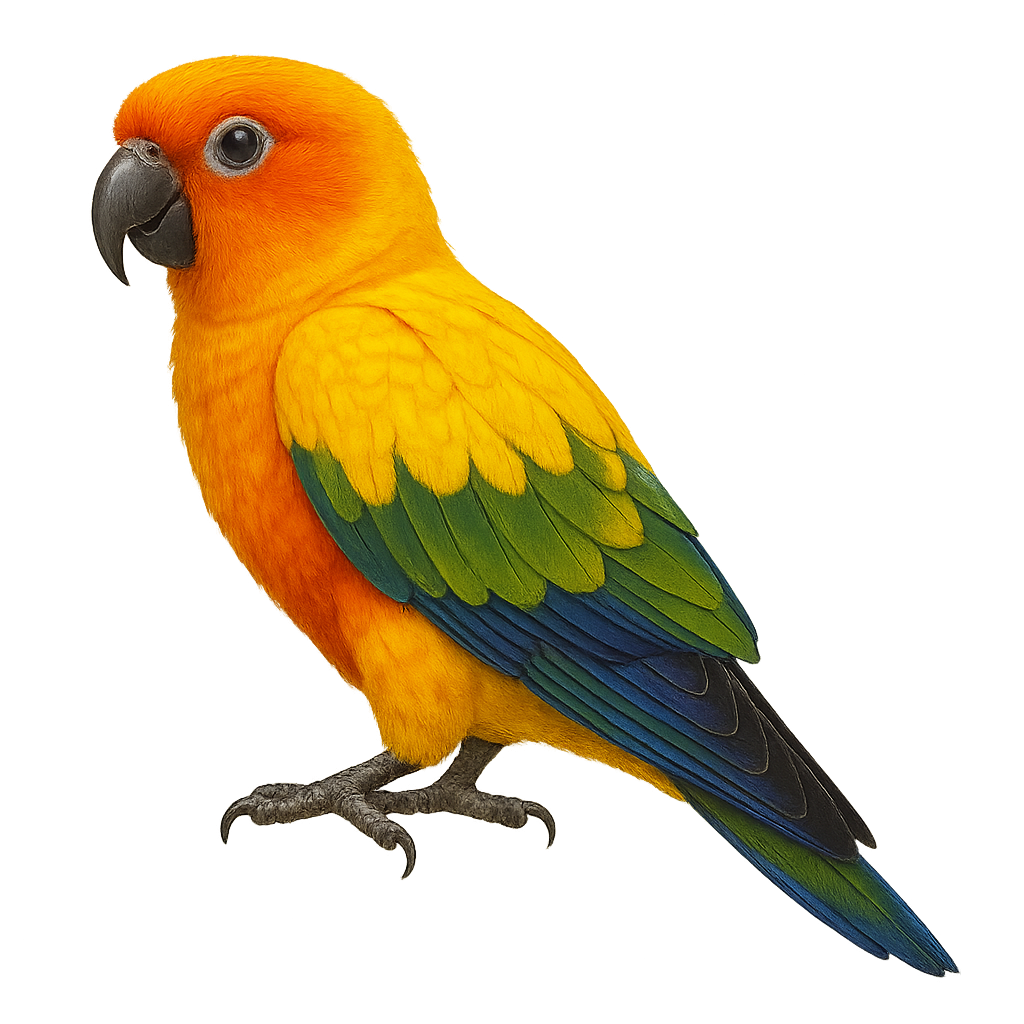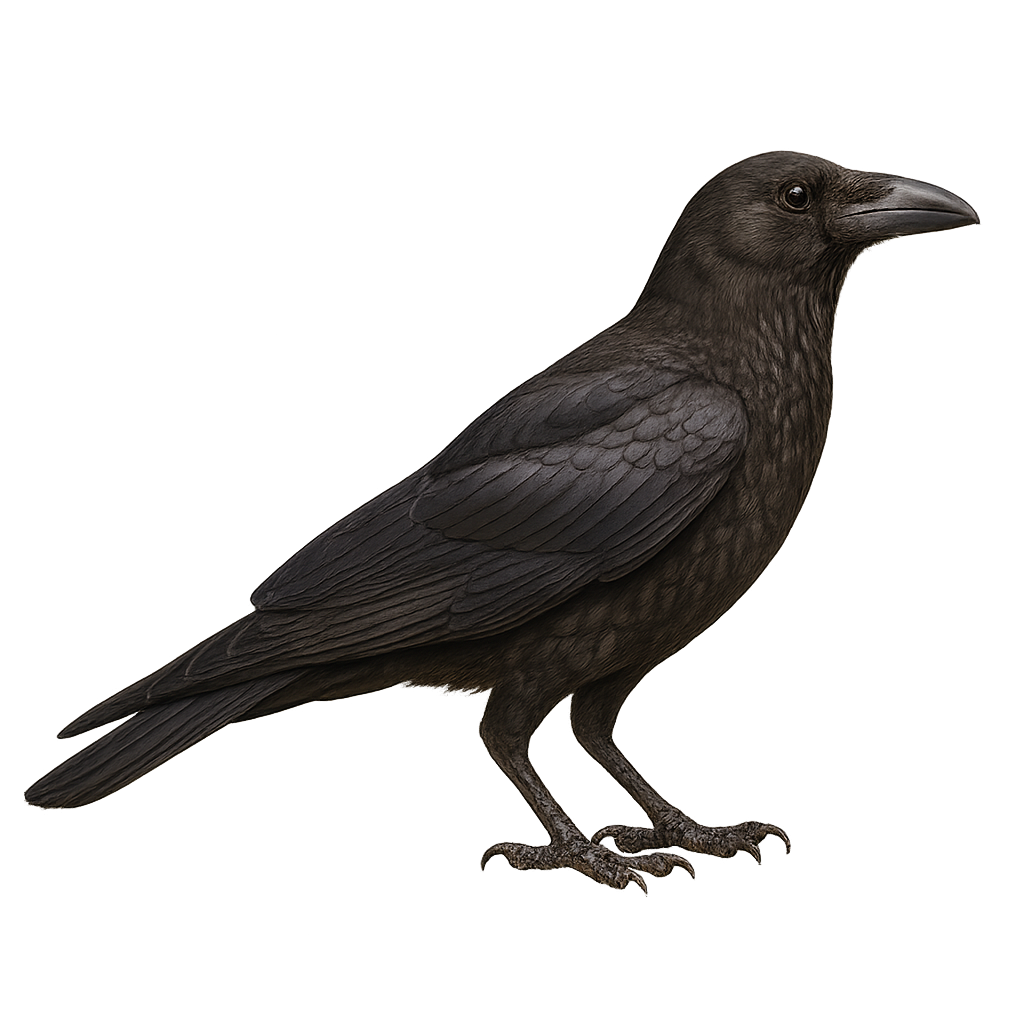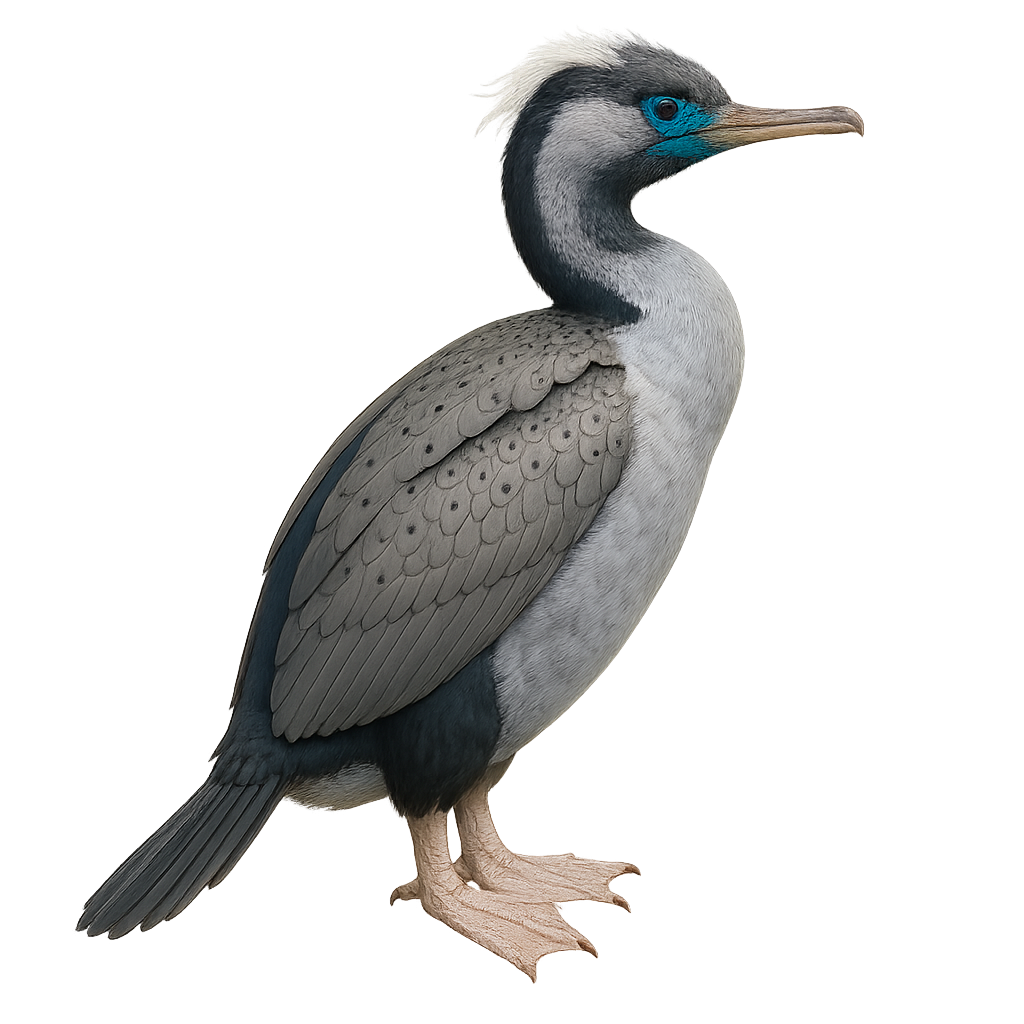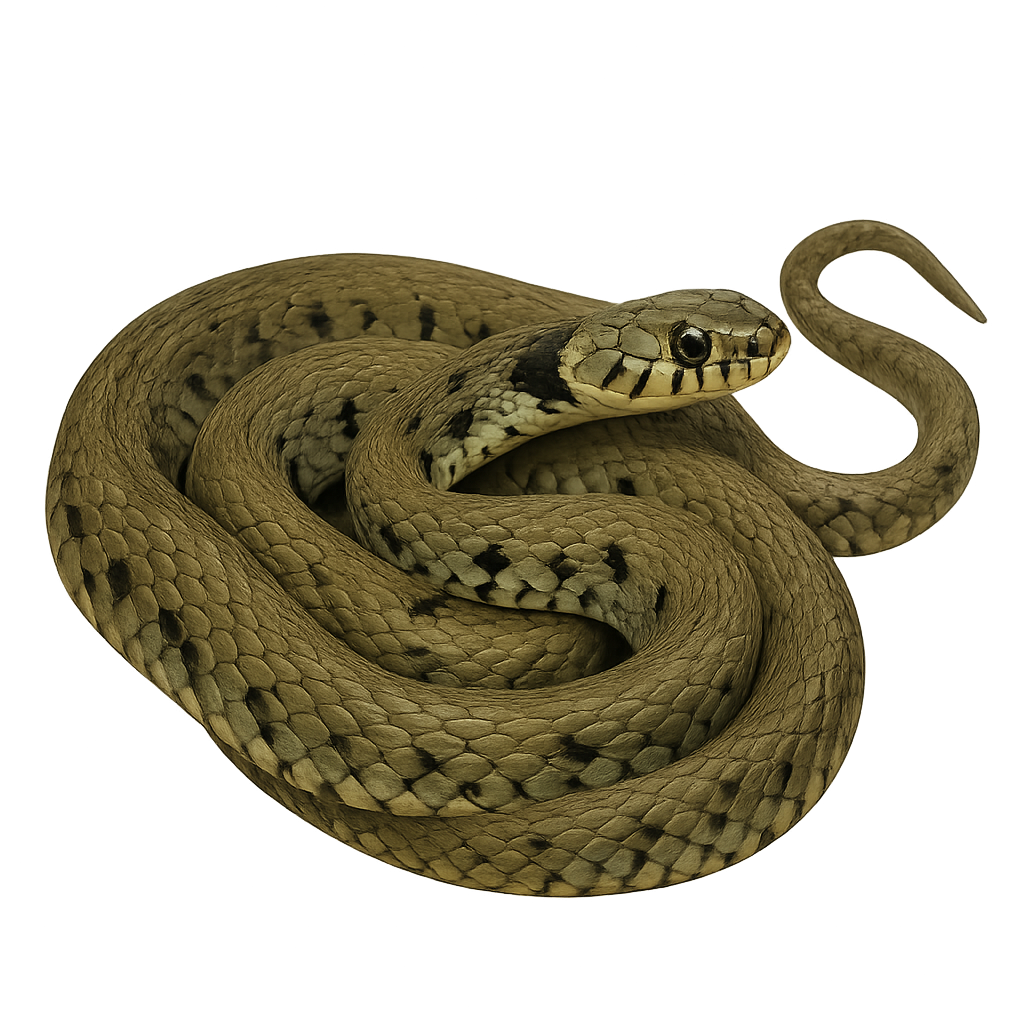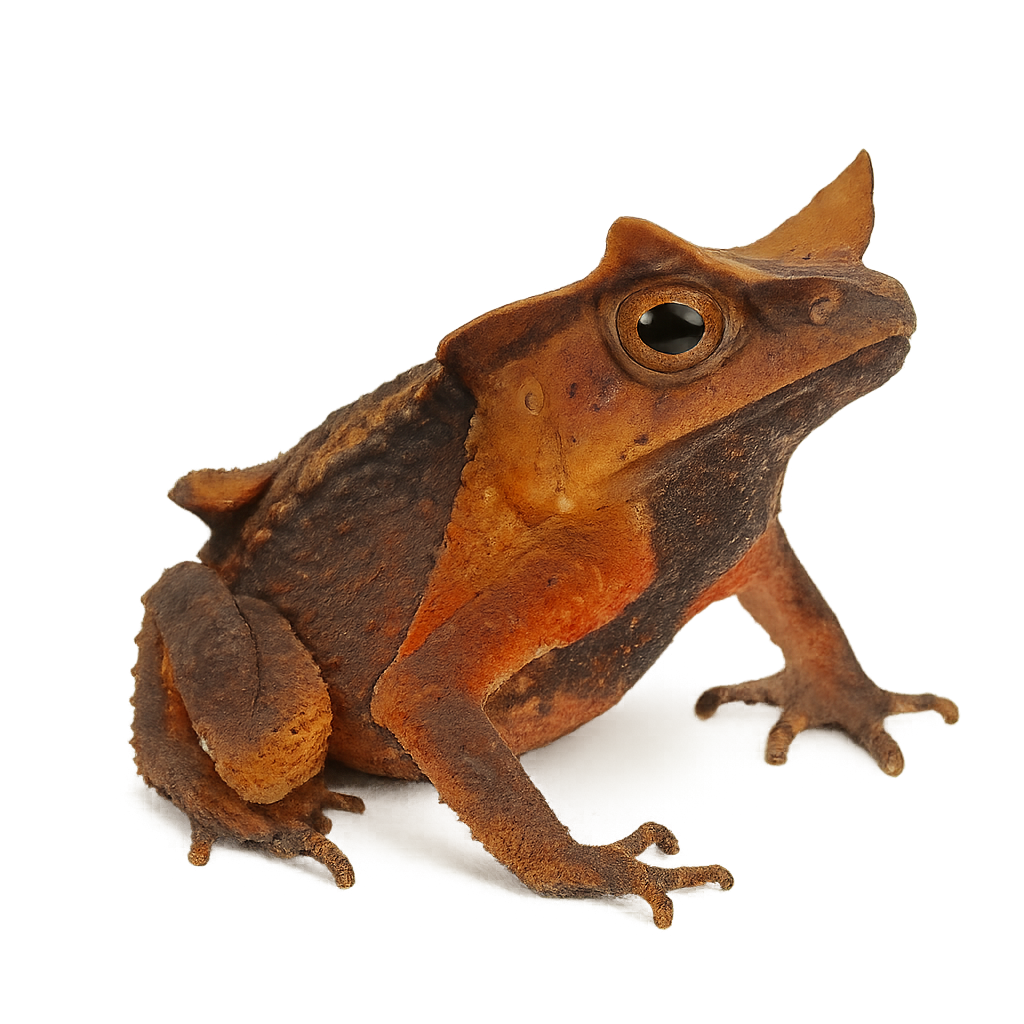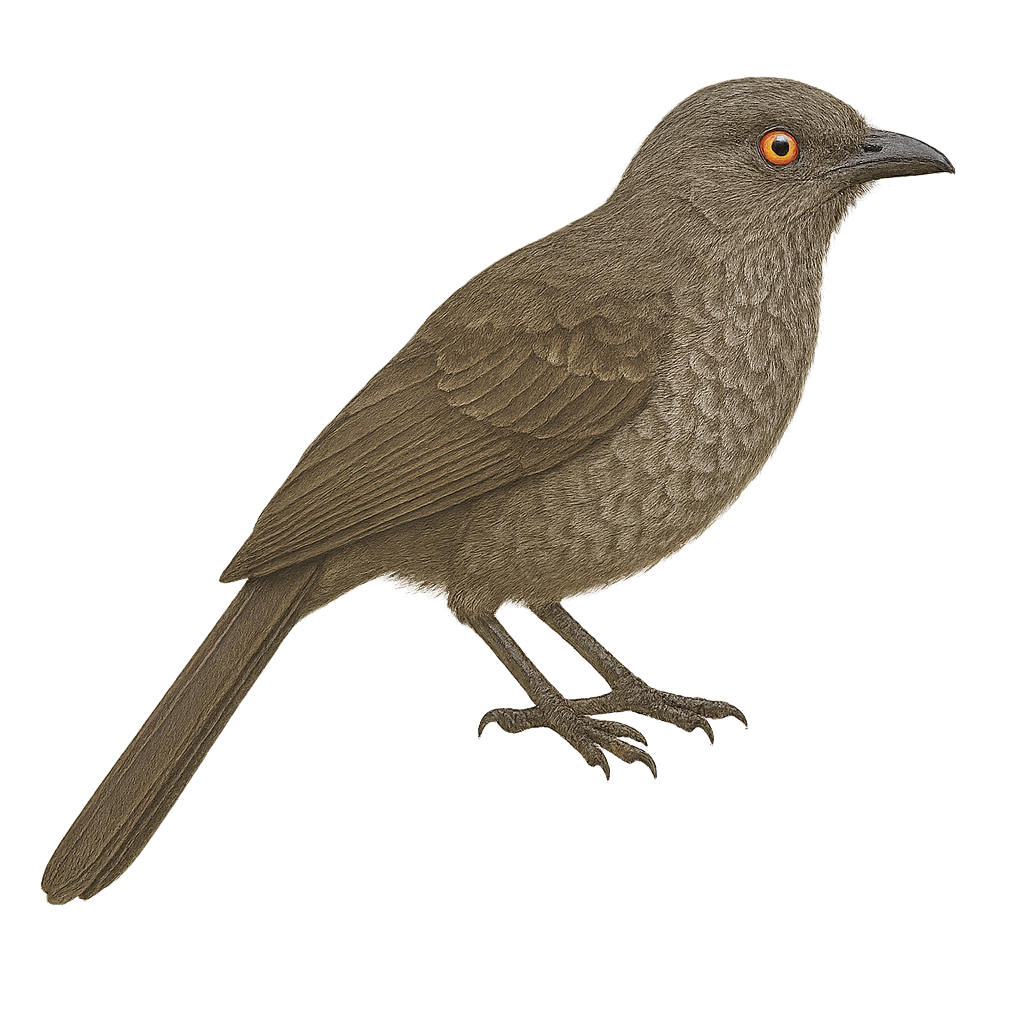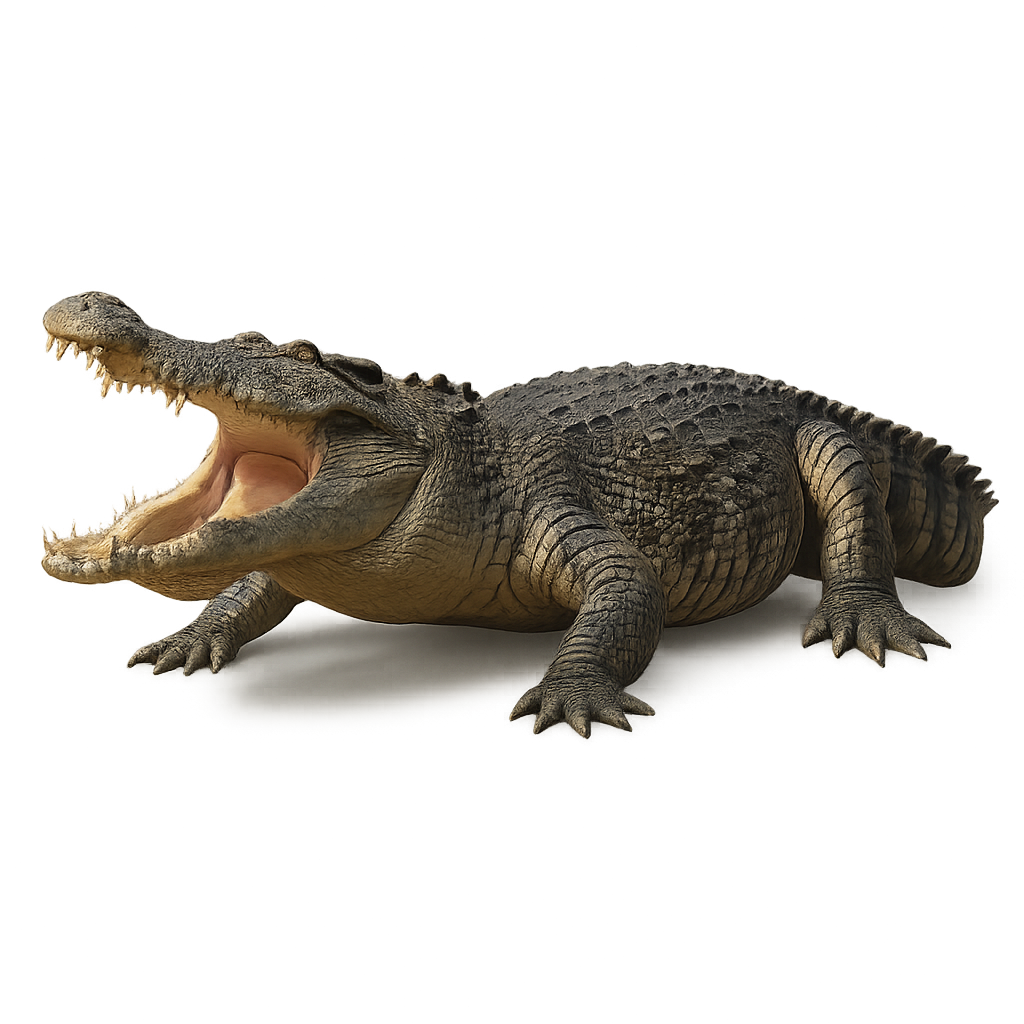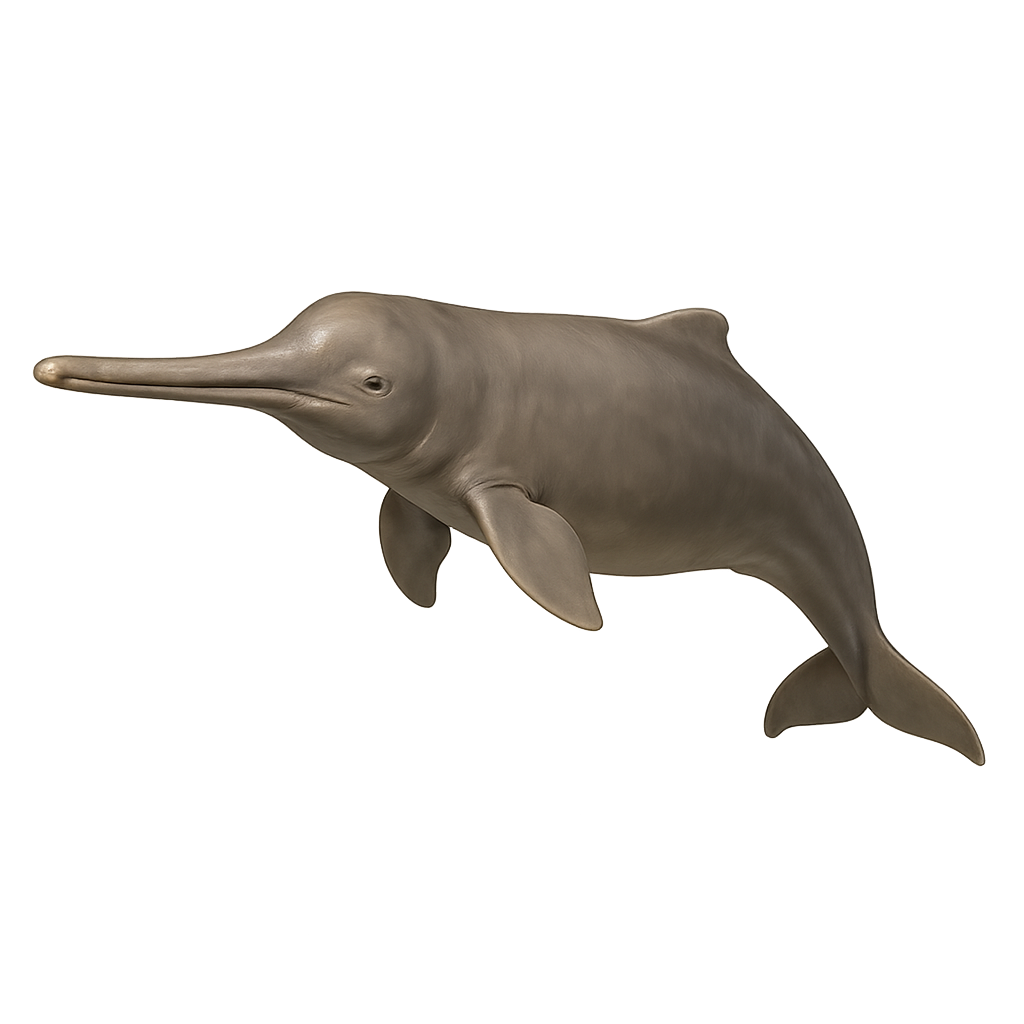The Spotted Sandpiper, Actitis macularius, is a small shorebird belonging to the Scolopacidae family. It is easily identified by its olive-brown upperparts and white underparts, speckled with dark spots during the breeding season. This bird frequents the shores of rivers, lakes, and ponds, where it feeds mainly on aquatic insects and small crustaceans. Known for its distinctive tail-bobbing behavior, it breeds in North America and migrates to Central and South America for the winter. Its adaptability to various aquatic habitats makes it a resilient species, although habitat degradation poses a potential threat.
The Solitary Sandpiper, Tringa solitaria, is a medium-sized shorebird, measuring about 20 to 23 cm in length. Its plumage is mainly dark brown above with white spots, while the underside is white. It is distinguished by its long green legs and straight, thin bill. This bird is often seen alone, as its name suggests, and frequents wetlands, marshes, and riverbanks. It is migratory, spending its summers in North America and winters in Central and South America. The Solitary Sandpiper is known for its fast, direct flight, often accompanied by sharp calls.
The Splendid Starling, or Lamprotornis splendidus, is a bird renowned for its iridescent plumage with metallic hues of blue, green, and violet. This medium-sized passerine, measuring about 22 to 24 cm in length, is commonly found in sub-Saharan Africa, particularly in savannas and open forests. Its black beak and yellow eyes stand out against its vibrant feathers. Sociable by nature, it lives in groups and primarily feeds on insects, fruits, and seeds. Its song is melodious, consisting of whistles and trills. The Splendid Starling is a resilient bird, capable of adapting to various environments, allowing it to thrive in diverse habitats.
The Superb Starling is a striking bird with a metallic blue plumage, bright orange belly, and white chest. It measures about 18 to 19 cm in length. This bird is commonly found in East Africa, particularly in Kenya and Tanzania, where it inhabits savannas, woodlands, and urban gardens. Known for its social behavior and melodious songs, Superb Starlings live in groups and are often seen foraging on the ground for insects, fruits, and seeds. Their nests are usually built in bushes or hollow trees.
The Spectacled Owl, or Pulsatrix perspicillata, is a medium-sized nocturnal raptor known for its distinctive white facial markings that resemble spectacles. It has dark brown plumage with a white chest and cream-colored belly. Found primarily in the dense tropical forests of Central and South America, this species is recognized by its deep, resonant "hoo-hoo" call. It primarily feeds on small mammals, birds, and insects. The Spectacled Owl is a solitary and territorial bird, often seen perched on low branches while hunting for prey.
The spotted owl is a nocturnal owl native to the dense forests of the western United States and Mexico. It is recognizable by its spotted brown plumage, large dark eyes, and round face. It primarily feeds on small mammals, birds, and insects, hunting at night. Threatened by habitat loss, it is protected in certain regions.
The Spiny Chuckwalla, scientifically known as Sauromalus hispidus, is a large lizard endemic to San Esteban Island in the Gulf of California, Mexico. This reptile is recognized for its rough, spiny skin, which helps it blend into its rocky environment. It primarily feeds on vegetation, including flowers and leaves. Males are generally larger than females and display more vibrant colors. This lizard is well adapted to its arid habitat and can withstand long periods without water. It is often seen basking in the sun on rocks, which helps regulate its body temperature.
The Storm's Stork, or Ciconia stormi, is a rare species of stork found primarily in the tropical rainforests of Borneo and Sumatra. It is distinguished by its black and white plumage, reddish beak, and long legs. This stork is particularly elusive and difficult to observe, making its study complex. It feeds mainly on fish, frogs, and insects, which it captures in shallow waters. Habitat destruction poses a major threat to its survival, and it is currently classified as critically endangered by the IUCN. Conservation efforts focus on protecting its habitats and raising awareness among local populations.
The Short-toed Snake Eagle is a large diurnal raptor, easily recognized by its white and light gray plumage, powerful beak, and large, wide, rounded wings. It is primarily found in open areas, steppes, light forests, and hills across Europe, North Africa, and the Middle East. This raptor is distinguished by its unique hunting habits: it feeds almost exclusively on snakes, which it spots using its keen eyesight.
The Short-toed Snake Eagle mainly preys on snakes, including vipers and grass snakes, which it captures by attacking them in flight or grabbing them on the ground. Once it has captured its prey, it kills it with a powerful beak strike before devouring it. Due to its specialized diet, it is often seen in habitats where snake populations are abundant. Although its population remains relatively stable, it is threatened by habitat loss, human disturbance, and illegal hunting in certain regions.
The Scissor-tailed Hummingbird, or Hylonympha macrocerca, is a hummingbird species endemic to Venezuela, specifically the Sierra de San Luis region. This small bird is recognizable by its long, scimitar-shaped tail, giving it an elegant and unique appearance. Its plumage is primarily emerald green with metallic sheens, while its throat displays a striking violet hue. Males and females exhibit notable differences, particularly in tail length, which is more pronounced in males. This hummingbird primarily inhabits humid forests and mountainous areas, where it feeds mainly on nectar, but also on small insects. Unfortunately, this species is considered vulnerable due to deforestation and the loss of its natural habitat.
The Stübel's Hummingbird, or Oxypogon stuebelii, is a hummingbird species endemic to the Colombian Andes. This small bird is notable for its striking crest and white facial feathers that form a beard-like appearance. Its plumage is primarily metallic green, with iridescent highlights that catch the sunlight. It inhabits the páramos, high-altitude ecosystems characterized by cool temperatures and strong winds. The Stübel's Hummingbird feeds mainly on nectar, which it gathers by hovering from flower to flower, but it also supplements its diet with small insects. Although its habitat is relatively restricted, it is well adapted to the harsh mountain conditions.
The Shining Sunbeam, Aglaeactis cupripennis, is a captivating bird from the Trochilidae family. It is primarily found in the Andes, inhabiting humid forests and shrublands at altitudes ranging from 1800 to 3200 meters. This hummingbird is notable for its coppery-winged sheen and brownish plumage, which help it blend into its surroundings. It primarily feeds on nectar, using its long, slender bill, but also consumes small insects to supplement its diet. Although generally suspicious in behavior, it can occasionally be tolerant of discreet observers.
The Speckled Hummingbird, or Adelomyia melanogenys, is a small, captivating bird belonging to the Trochilidae family. It is primarily found in the mountainous regions of South America, particularly in the Andes. This hummingbird is distinguished by its green and brown plumage with speckled patterns, giving it a unique appearance. Its modest size, typically around 8 to 9 cm, makes it agile and swift in flight. It primarily feeds on nectar but also consumes small insects to supplement its diet. The Speckled Hummingbird is often seen in humid forests and wooded areas, where it plays a crucial role in pollinating local plants.
The Scintillant Hummingbird is one of the smallest birds in the world, measuring about 6.5 cm in length. The male has bronze-green upperparts, a bright reddish-orange throat, and a rufous tail with black bars. The female is more subdued, with a buffy throat spotted with green and rufous flanks. This species is endemic to Costa Rica and western Panama, inhabiting forest edges, coffee plantations, and gardens between 900 and 2500 meters elevation. It feeds primarily on nectar from small flowers, such as sages, and supplements its diet with small insects for protein. Although listed as Least Concern, deforestation could threaten its habitats.
The Scitulus Hummingbird is a fascinating bird known for its small size and vibrant colors. It primarily inhabits tropical and subtropical forests, playing a crucial role in plant pollination. Its iridescent plumage, ranging from emerald green to deep blue, makes it easily recognizable. This hummingbird is particularly agile in flight, capable of rapid and precise movements to access flower nectar. It primarily feeds on nectar but also consumes small insects to supplement its diet. The Scitulus Hummingbird is a solitary bird, except during the breeding season when it becomes more territorial.
The Sparkling-tailed Hummingbird, or Tilmatura dupontii, is a captivating bird belonging to the Trochilidae family. This small hummingbird is notable for its sparkling tail and vibrant colors, ranging from emerald green to deep blue. It is primarily found in the tropical and subtropical forests of Mexico and Central America. This hummingbird is an essential pollinator, feeding mainly on flower nectar, but it also consumes small insects to supplement its diet. Its fast and agile flight allows it to maneuver easily between flowers and escape predators. Although its conservation status is not of concern, deforestation and habitat loss pose potential threats to its population.
The Stephens's Emerald Dove, or Chalcophaps stephani, is a medium-sized pigeon known for its striking plumage with shades of emerald green. It primarily inhabits the tropical rainforests of Southeast Asia and Australia. Its bright red beak and pink legs contrast with its green and brown body, creating a stunning visual display. Often seen alone or in small groups, it feeds on seeds and fallen fruits. Although its flight is fast and direct, it prefers to walk on the forest floor in search of food. This species is generally discreet, blending into its environment with its camouflaged plumage.
The Sun Conure, or Aratinga solstitialis, is a medium-sized parrot renowned for its vibrant plumage. Native to South America, primarily northeastern Brazil, it displays bright colors ranging from golden yellow to orange, with green touches on its wings and back. This parrot is highly social, living in groups in tropical forests, savannas, and wooded areas. Known for its loud call and ability to mimic sounds, the Sun Conure faces threats from deforestation and the illegal pet trade. It is listed as an endangered species by the IUCN.
The Sri Lanka Junglefowl, Gallus lafayettii, is a pheasant species endemic to Sri Lanka. It is known for its vibrant plumage, featuring shades of red, orange, and yellow, and a bright red comb. Males have a long, arched tail, while females are more subdued with brownish feathers. These birds prefer dense forests and wooded areas, feeding on seeds, insects, and small invertebrates. Although primarily ground-dwelling, they can fly short distances to evade predators. Their distinctive call is often heard at dawn and dusk.
The Somali Crow, scientifically known as Corvus edithae, is a bird endemic to the arid regions of the Horn of Africa. It is distinguished by its glossy black plumage and robust beak. Measuring about 46 cm in length, it is often mistaken for other crows but can be identified by its slightly smaller size and distinctive call. This crow is omnivorous, feeding on fruits, insects, and small animals. It is often seen in small groups, exploring savannas and semi-desert areas. Although relatively common in its habitat, monitoring its status is essential due to environmental changes that may affect its population.
The Spotted Shag, or Phalacrocorax punctatus, is a marine bird endemic to New Zealand. It is notable for its unique plumage, with spotted patterns on its back and wings, and a lighter shade on its belly. During the breeding season, it sports a distinctive crest on its head. This cormorant is often seen along rocky coastlines, where it primarily feeds on fish and small marine invertebrates. It skillfully dives to catch its prey, using its wings to propel itself underwater. Although relatively common in its natural habitat, it remains sensitive to human disturbances and marine pollution.
The Southern Antpipit is a small, elusive bird found primarily in the humid forests of South America, particularly in Brazil and Argentina. Its plumage is mainly brown with lighter shades on the belly, allowing it to blend seamlessly into its surroundings. It is often seen foraging for insects on the forest floor, moving nimbly among the leaf litter. Although not very shy, it remains cautious around humans and prefers undisturbed areas. Its song is a gentle whistle, often heard at dawn and dusk.
The Spangled Cotinga is a striking bird known for its vibrant plumage and elusive presence in the tropical forests of South America. Males display bright blue feathers with a purple throat, while females are more subdued with brownish tones. This bird is often seen perched high in the canopy, feeding primarily on fruits. Its song is infrequent but distinctive, aiding in its identification. The Spangled Cotinga plays a crucial role in seed dispersal, thus supporting forest regeneration. Although its habitat is threatened by deforestation, it is currently listed as of least concern by the IUCN.
The European Water Snake is a non-venomous species of snake, easily recognized by the distinct black or brown collar-like markings around its neck. Its body is typically olive or brown, with lighter patterns on the back and sides. This snake typically measures between 50 and 100 cm long, although it can sometimes reach up to 1.5 meters in rare cases.
The European Water Snake primarily inhabits wetland areas, such as lake shores, rivers, and marshes. It is highly agile and spends most of its time hunting fish, amphibians, and small reptiles, which it captures by diving or swimming. Though mainly terrestrial, it is also an excellent swimmer. The species is protected in some areas due to habitat loss. The European Water Snake plays an important role in regulating amphibian populations and controlling small aquatic animals.
The Squacco Heron is a small heron, easily recognizable by its head adorned with long white feathers that form a sort of mane, which gives it its name. Its plumage is primarily beige and white, with brown or gray shades on the wings and back, and a short, thick beak. This heron measures about 45 cm in length, with a wingspan of approximately 80 cm. It is often observed in wetland areas such as marshes, riverbanks, and ponds, where it primarily hunts small fish, aquatic insects, and crustaceans.
The Squacco Heron is a migratory bird found primarily in the Mediterranean regions, but its population is declining due to habitat loss and water pollution. Although it is a rather discreet and solitary bird, it can sometimes be seen in small groups during the breeding season. This heron has a characteristic hunting behavior, walking slowly in shallow water where it probes the ground with its beak.
The Rhinella margaritifera, commonly known as the South American Common Toad, is a species of toad found primarily in the humid tropical forests of South America. This toad is distinguished by its rough skin and pearly patterns, which allow it to blend effectively into its natural environment. It is generally brown with darker spots, providing excellent protection against predators. The South American Common Toad is nocturnal, spending the day hidden under leaves or in burrows. It primarily feeds on insects and other small invertebrates. Although its habitat is threatened by deforestation, it is currently classified as of least concern by the IUCN.
The Scaly Babbler, or Turdoides squamulatus, is a medium-sized bird known for its brownish plumage with distinctive scaly patterns on the chest and back. Often seen in noisy groups, they move through the underbrush and savannas of sub-Saharan Africa. These birds are known for their complex social behavior and varied vocalizations. They primarily feed on insects, small invertebrates, and occasionally fruits. Their preferred habitat includes shrublands and open forests. Although they are quite widespread, observing them may require patience due to their wary nature and habit of hiding in dense vegetation.
The Saltwater crocodile is the largest of the crocodiles, reaching up to 7 meters in length. It lives in the saline and brackish waters of the coasts of Southeast Asia, northern Australia, and the islands of the Indian Ocean. A powerful predator, it primarily feeds on fish, birds, and mammals, including large prey such as buffaloes and even sharks. While it is often feared for its size and power, it remains discreet in shallow waters and mangrove swamps. Due to hunting and habitat loss, the Saltwater crocodile is classified as a vulnerable species.
The South Asian river dolphin is a small freshwater cetacean in the family Platanistidae, measuring 2–2.5 m in length, with a pale grey streamlined body and a long narrow beak. It inhabits shallow rivers, oxbow lakes, and canals of the South Asian subcontinent, feeding mainly on freshwater fish and crustaceans. Blind, it uses echolocation to navigate and hunt in turbid waters.
The Sira Poison Frog, or Ranitomeya lamasi, is a small, brightly colored frog native to the humid tropical forests of Peru. It is distinguished by its striking patterns of bright colors, often a combination of black, yellow, and blue, which serve as a warning to potential predators of its toxicity. This species is typically found in lowland areas, where it inhabits leaf litter and areas near water bodies. Lamasi Poison Frogs are known for their territorial behavior and diurnal lifestyle. They primarily feed on small insects and other arthropods. Their reproduction involves parental care, with eggs laid on the ground and tadpoles transported on the backs of adults to water points.


